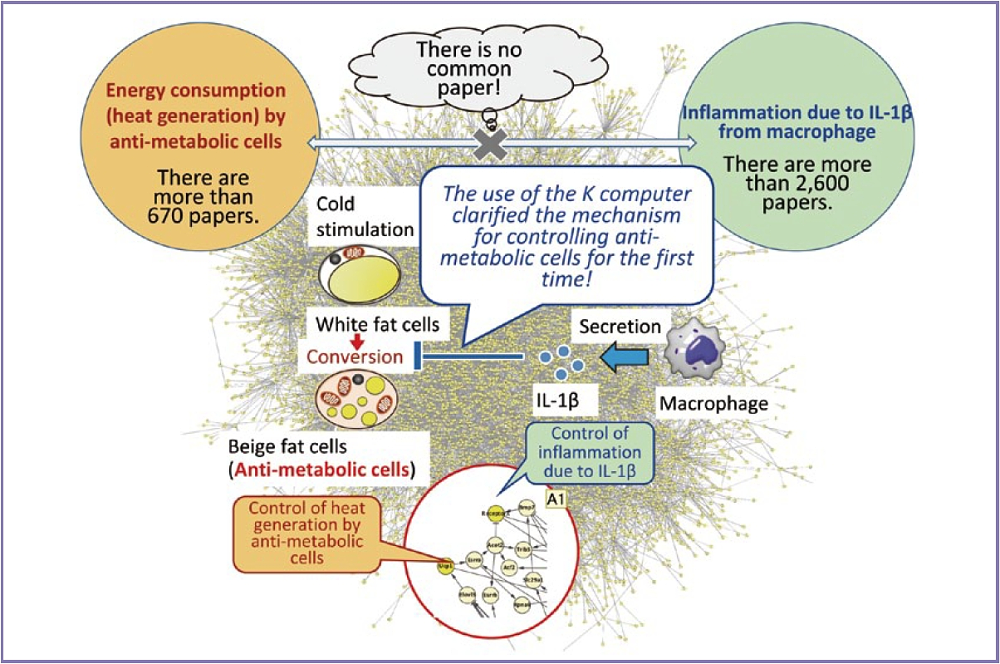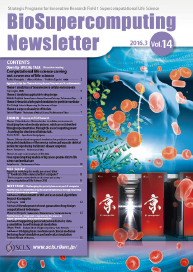The K computer has made a "warp" of medical and life sciences into a new dimension.
In some cases, cancer is caused by a virus infection. Japan is the major endemic area of human T-cell leukemia virus type I (HTLV-v). After infection during infancy, a highly malignant blood cancer called adult T-cell leukemia-lymphoma (ATL) develops after a latent period of a few decades. A large-scale omics data analysis that was conducted using the world’s largest number of ATL cases (400 cases or more) revealed the full details of genetic abnormalities of ATL, and successfully discovered the targets for the development of new therapeutic drugs (Nature Genetics 2015). Also, a large-scale data analysis clarified the comprehensive histology of colon cancer which evolves spatiotemporally, obtains heterogeneity and develops metastasis to the liver, and its simulations were conducted (PLoS Genetics 2016). In the prediction of effects on anticancer drugs in individual patients, the world’s largest-scale gene network analysis was conducted based on gene expression data of more than 600 cancer cell lines, and data for sensitivity and resistance against more than 100 kinds of drugs, to build an infrastructure for individualized anticancer drug administration with the world’s highest accuracy and precision (PLoS One 2014).
The body temperature of a baby is very high, because his/her brown fat cells generate heat. However, as he/she grows up, those cells disappear. Meanwhile, in case of a lab mouse at 4˚C, its fat cells are known to be converted into beige anti-metabolic cells which are different from brown fat cells, and generate heat 100 times stronger than that generated by skeletal muscles. By performing a large-scale gene network analysis, the relationship between physiologically active substances involved in the inflammation pathway called IL-1β and the heat generation mechanism was discovered for the first time, and the molecular mechanism of conversion into anti-metabolic cells was completely unraveled (Fig.) (Cytokine 2016).
With the advent of GHOST-MP which carries out massive parallelization and high-speed search of homologous sequences, the analysis of the metagenome of human feces can be completed within 10 minutes, and the identification of resident bacteria which can stimulate cross-antigenicity against cholera is advancing dramatically in cooperation with immunology researchers. There is a high expectation for vaccine development through the use of the K computer.


Fig. : A large-scale network analysis made possible only by the K computer clarified the mechanism of conversion into anti-metabolic cells.
Open Up Special Talk : Approach to the four Themes during the past five years and its achievements
Theme 1 Simulations of biomolecules in cellular environments
Theme 2 Simulation applicable to drug design
Theme 3 Hierarchical integrated simulation for predictive medicine
Theme 4 Large-scale analysis of life data

















